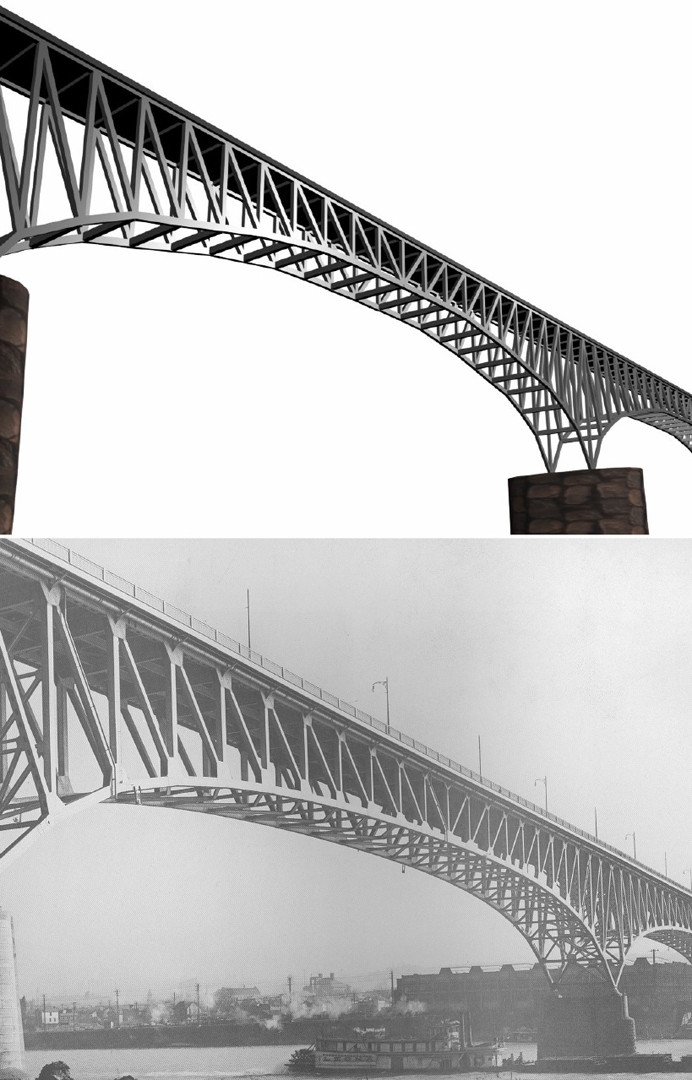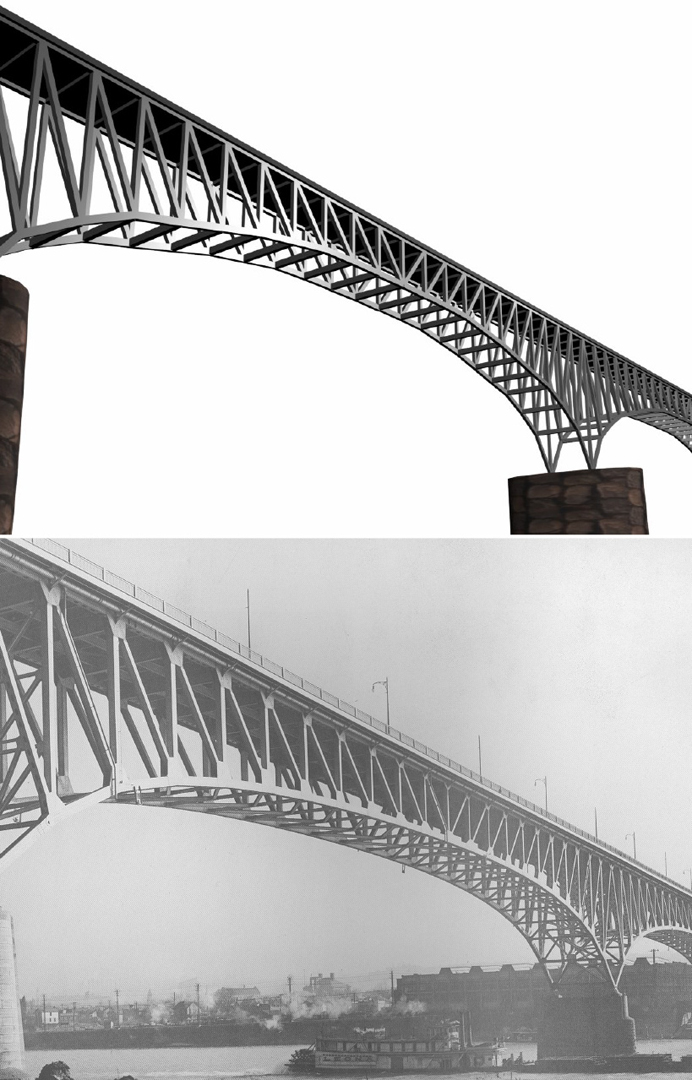“Creating models of truss structures with optimization” by Smith, Hodgins, Oppenheim and Witkin
Conference:
Type(s):
Title:
- Creating models of truss structures with optimization
Presenter(s)/Author(s):
Abstract:
We present a method for designing truss structures, a common and complex category of buildings, using non-linear optimization. Truss structures are ubiquitous in the industrialized world, appearing as bridges, towers, roof supports and building exoskeletons, yet are complex enough that modeling them by hand is time consuming and tedious. We represent trusses as a set of rigid bars connected by pin joints, which may change location during optimization. By including the location of the joints as well as the strength of individual beams in our design variables, we can simultaneously optimize the geometry and the mass of structures. We present the details of our technique together with examples illustrating its use, including comparisons with real structures.
References:
1. CHAPMAN, C., SAITOU, K., AND JAKIELA, M. 1993. Genetic algorithms as an approach to configuration and topology design. In Advances in Design Automation, vol. 65, ASME, 485-498.Google Scholar
2. HAFTKA, R. T., AND GRANDHI, R. V. 1986. Structural shape optimization—a survey. Computer Methods in Applied Mechanics and Engineering 57, 91-106. Google Scholar
3. HARRISS, J. 1975. The Tallest Tower — Eiffel and the Belle Epoque. Houghton Mifflin.Google Scholar
4. HEMP, W. 1973. Optimum Structures. Clarendon.Google Scholar
5. HEYMAN, J. 1956. Design of beams and frames for minimum material consumption. Quarterly of Applied Mathematics 8, 373-381.Google Scholar
6. HIBBELER, R. 1998. Structural Analysis, fourth ed. Prentice Hall. Google Scholar
7. KIRSCH, U. 1989. Optimal topologies of structures. Applied Mechanics Reviews 42, 8, 223-238.Google Scholar
8. MACCALLUM, C., AND HANNA, R. 1997. Deflect: A computer aided learning package for teaching structural design. In Proceedings of Education in Computer Aided Architectural Design in Europe.Google Scholar
9. MICHELL, A. 1904. The limits of economy of material in frame structures. Philosophical Magazine 8, 589-597.Google Scholar
10. PARISH, Y. I. H., AND MÜLLER, P. 2001. Procedural modeling of cities. In Proceedings of SIGGRAPH 2001, Computer Graphics Proceedings, Annual Conference Series, 301-308. Google Scholar
11. PEDERSON, P. 1992. Topology optimization of three dimensional trusses. In Topology Designs of Structures, NATO ASI Series — NATO Advanced Research Workshop, Kluwer Academic Publishers, 19-30.Google Scholar
12. PICCOLOTTO, M., AND RIO, O. 1995. Design education with computers. In Proceedings of ACADIA 95: Computing in Design, 285-299.Google Scholar
13. POPOV, E. 1998. Engineering Mechanics of Solids. Prentice Hall.Google Scholar
14. PRUSINKIEWICZ, P. 1993. Modeling and visualization of biological structures. In Proceeding of Graphics Interface, 128-137.Google Scholar
15. REDDY, G., AND CAGAN, J. 1995. An improved shape annealing algorithm for truss topology. ASME Journal of Mechanical Design 117, 2A, 315-321.Google Scholar
16. SPANIER, J., AND OLDHAM, K. 1987. An Atlas of Functions. Hemisphere. Google Scholar
17. SPILLERS, W. 1975. Iterative Structural Design. North Holland Publishing Co.Google Scholar
18. TOPPING, B. 1983. Shape optimization of skeletal structures: A review. Journal of Structural Engineering 109, 1933-1951.Google Scholar
19. VANDERPLAATS, G., AND MOSES, F. 1977. Automated optimal geometry design of structures. Journal of the Structural Division of the American Society of Civil Engineers 98, ST3 (March).Google Scholar
20. WRIGHT, M., AND GILL, P. 1981. Practical Optimization. Academic Press.Google Scholar





